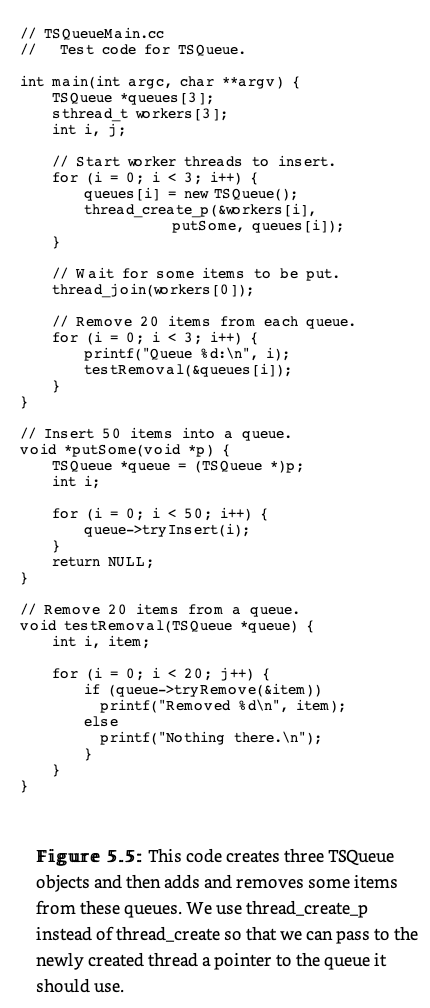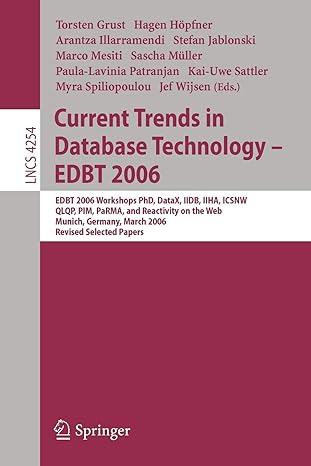Answered step by step
Verified Expert Solution
Question
1 Approved Answer
Precisely describe the set of possible outputs that could occur when the program shown in Figure 5.5 is run. // TSQueueMa in.cc // Test code

Precisely describe the set of possible outputs that could occur when the program shown in Figure 5.5 is run.
// TSQueueMa in.cc // Test code for TS Queue. int main(int argc, char **argv) TS Queue *queues [3]; s thread t vorkers [3 ]; int i, j; // Start wrker threads to insert. for (i=0; i try Insert(i); return NULL; // Remove 20 items from a queue. void tes tRemoval(TSQueue *queue) int i, item; for (i=0; i tryRemove(&item)) printf ("Removed %d ", item) else printf("Nothing there. "); Figure 5.5: This code creates three TSQueue objects and then adds and removes some items from these queues. We use thread create p instead of thread create so that we can pass to the newly created thread a pointer to the queue it should use // TSQueueMa in.cc // Test code for TS Queue. int main(int argc, char **argv) TS Queue *queues [3]; s thread t vorkers [3 ]; int i, j; // Start wrker threads to insert. for (i=0; i try Insert(i); return NULL; // Remove 20 items from a queue. void tes tRemoval(TSQueue *queue) int i, item; for (i=0; i tryRemove(&item)) printf ("Removed %d ", item) else printf("Nothing there. "); Figure 5.5: This code creates three TSQueue objects and then adds and removes some items from these queues. We use thread create p instead of thread create so that we can pass to the newly created thread a pointer to the queue it should use
Step by Step Solution
There are 3 Steps involved in it
Step: 1

Get Instant Access to Expert-Tailored Solutions
See step-by-step solutions with expert insights and AI powered tools for academic success
Step: 2

Step: 3

Ace Your Homework with AI
Get the answers you need in no time with our AI-driven, step-by-step assistance
Get Started


